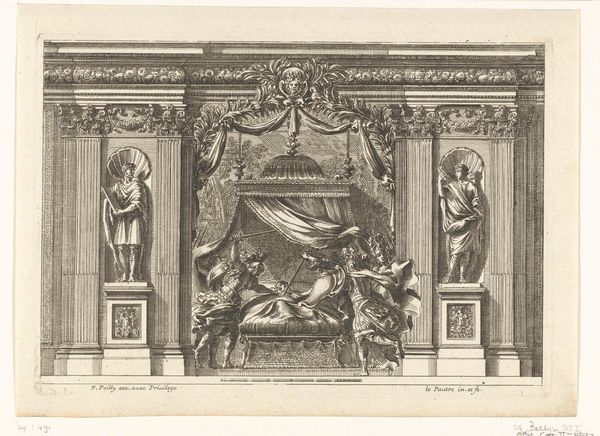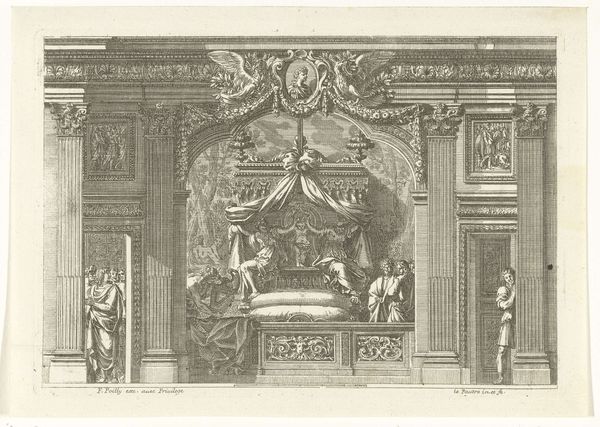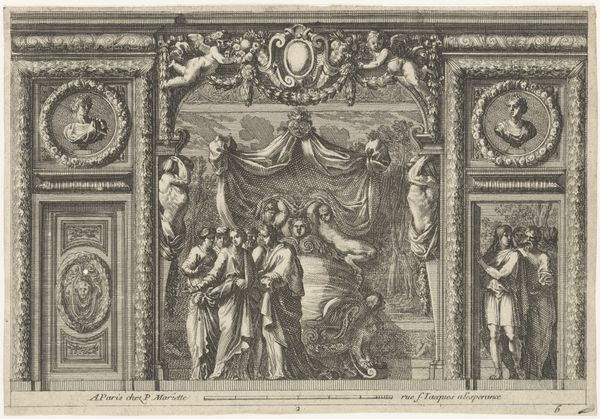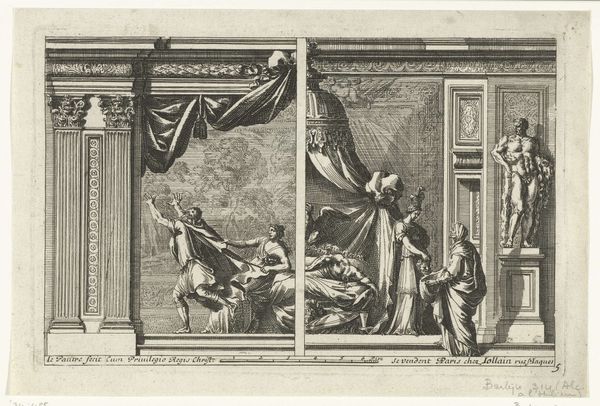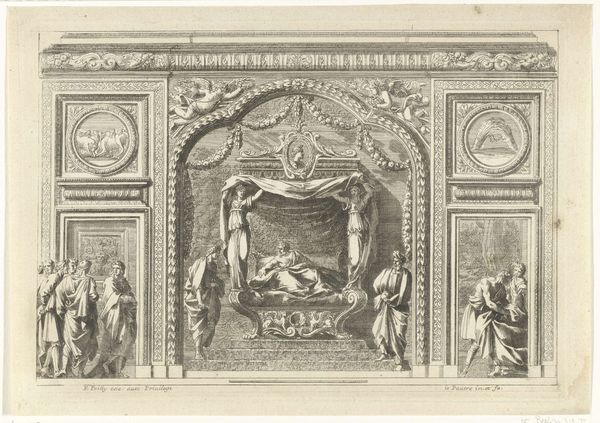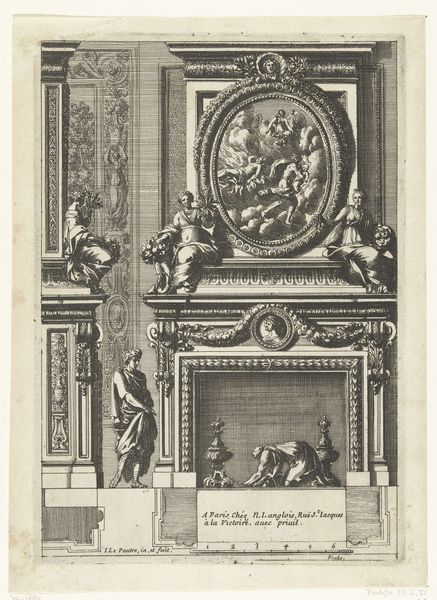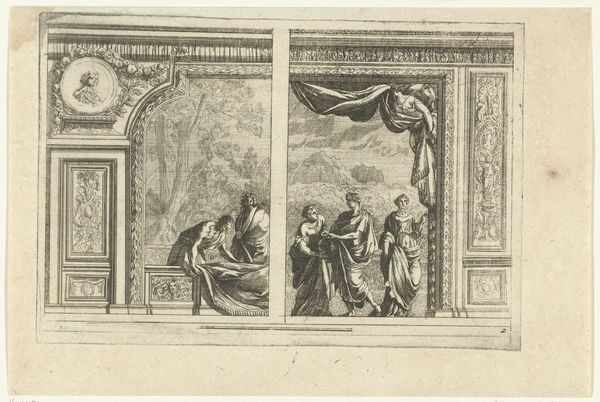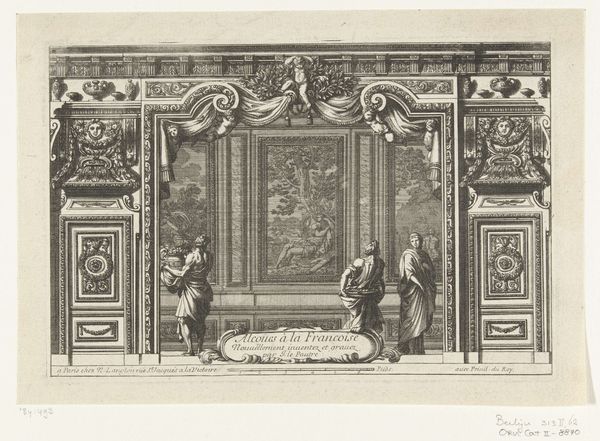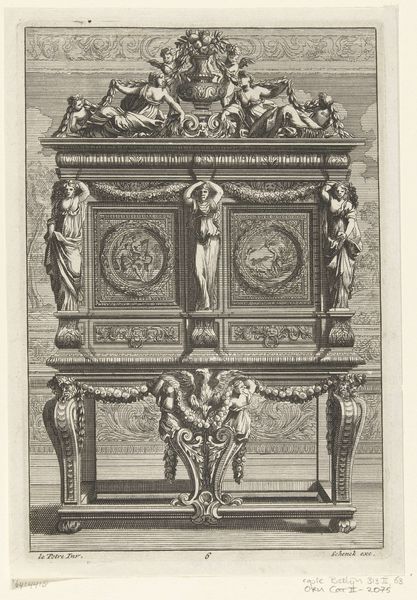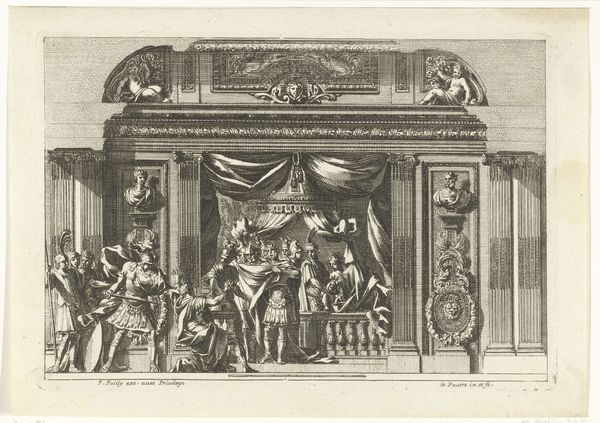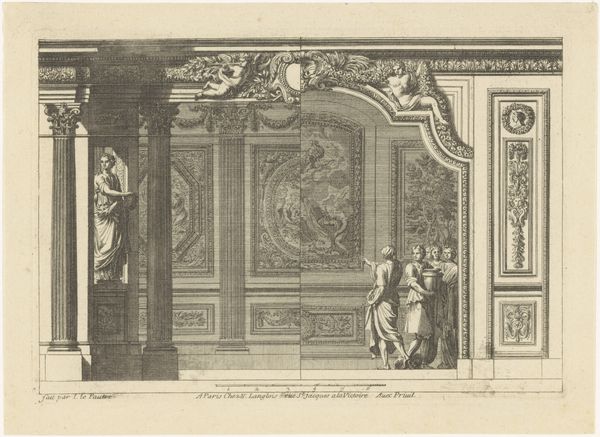
print, engraving
#
allegory
#
baroque
# print
#
figuration
#
history-painting
#
engraving
Dimensions: height 161 mm, width 234 mm
Copyright: Rijks Museum: Open Domain
Curator: Let's consider this print held here at the Rijksmuseum titled "Alkoof met Judith die het hoofd van Holofernes afhakt" created around 1665 by Jean Lepautre. It is a rather ornate engraving depicting a biblical scene within an architectural alcove. Editor: It strikes me as strangely ornamental for such a violent scene. The precision and intricacy of the alcove’s design almost overshadow the drama unfolding within. Curator: Absolutely. Notice how Lepautre uses line and shadow to create a sense of depth and texture, emphasizing the classical elements: the Corinthian columns, the elaborate cornice, and the sculptural figures at the top. The structure itself presents an almost theatrical setting for the drama. Editor: The visual weight of the architecture definitely reframes the narrative. Judith’s act, usually depicted with raw emotion and visceral detail, is here distanced and stylized. It's interesting to note the prevalence of classical symbols—armor, laurel wreaths—contrasted with the biblical narrative. This could be about situating Judith's triumph within a broader historical or heroic context. Curator: Indeed, Lepautre creates layers of meaning through the juxtaposition of classical motifs and biblical narrative. The formal structure, governed by principles of symmetry and balance, contains and perhaps even tames the potentially chaotic emotions of the scene. We can also interpret it structurally – the sharp lines defining Judith are distinct from the flowing drapes framing the scene. Editor: This interplay also shapes the story. The cold, almost decorative rendering of Judith’s action underscores a calculated, perhaps even ritualistic aspect to her bravery. This wasn’t merely a crime of passion but a deliberate act of defiance with religious underpinnings— a defense of her people. We shouldn’t forget, the decapitation imagery links to broader concepts of sacrifice. Curator: Agreed. It’s not just about the event itself, but about its symbolic significance, framed and emphasized through formal and structural means. Lepautre manipulates visual vocabulary here to guide our interpretation. Editor: This has been insightful, analyzing Lepautre’s work on "Alkoof met Judith die het hoofd van Holofernes afhakt", exploring how structure and imagery unite to evoke multiple layers of meaning in the themes of power and freedom. Curator: By understanding how form and content intertwine in Lepautre’s design, we deepen our comprehension of its rich, intricate discourse.
Comments
No comments
Be the first to comment and join the conversation on the ultimate creative platform.
